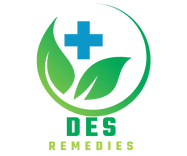Padabhyangam Therapy – Know Everything About It & Live Healthy!

Using methodically designed therapies in the Ayurvedic way of life ensures smooth bodily operation and restoring wellness. Lifelong healing through therapies and procedures is emphasized in Ayurveda. Padabhyangam in Ayurveda is regarded as the “mother” of all therapeutic modalities. Let’s know everything about it in this article.
About Padabhyangam Therapy
A rough translation of padabhyangam is “foot massage” or “foot therapy.” Ayurveda specializes in this therapy because the connection between the earth and our bodies is made by our feet. Holistic foot care involves massaging the pressure points with oils made of medicinal and herbal ingredients. Using the proper massage techniques, we can heal our body’s ailments and reestablish the connection between our body and soul at their base.
Procedure for Padabhyangam Therapy and Effects on the Body
In Padabhyangam, various methods are employed to give a helpful oil massage.
The Hand Technique

Hand washing procedure
It involve massaging and stroking the foot to improve the blood flow to the foot’s heart and reap the many advantages of padabhyanga. Additionally, it stimulates the energy flow and directs it in the desired direction. For Pada Abhyanga, the sesame seed oil is typically used, but herbs infused in clarified butter or oil are also used in some instances. Additionally frequently used for the therapy are cow ghee, Ksheerabala tailam, Pinda tailam, Tiktaka ghritam, Kottamchukkadi tailam, Eranda tailam, Mahamasha tailam, Mahanarayana tailam, and Guggulutiktaka ghritam.
The Kasa Bowl

Warm, medicated oil-coated bowls with rounded surfaces are used to massage the foot in both circular and linear motions for better circulation. The purpose of using copper and tin Kasa bowls is to ensure the removal of toxins, stimulate nerve endings, and release negative energy.
The Marma Therapy

To ensure that the energy points are activated, the energy points are handled carefully and massaged thoroughly but gently. By using this therapy, the toxins are removed while also clearing a path for the removal of negative energy.
Treatment of Body Parts in Padabhyangam Therapy
According to Ayurveda, various parts of the feet represent various bodily organs. The “marma” or pressure points on the feet. These are the energy hubs that are located all over the body. The circulatory energies in the liver, kidneys, stomach, neck, heart, head, and other organs are triggered when pressed.
Each foot has five of the 107 marmas, or vital areas, according to Ayurveda, and each has many nerve endings. Padabhyanga promotes health and well-being by assisting in the release of all the unfavorable energy from these marmas.
It is safe to say that Padabhyanga has a direct impact on the subconscious nature and also has a purifying effect on the mind.
Sanskrit terms for “foot” and “massage with oils” are “abhyangam” and “pada,” respectively. This all adds up to foot massage. Similar to how a tree’s roots connect its branches, trunk, and leaves to mother earth, this Ayurvedic therapy views our feet as the focal point of all energies that connect the body to the earth. As proper root nutrition produces good fruit, proper Padabhyangam nutrition produces bodily wellness.
To begin, lukewarm oil or ghee is applied to the soles, heels, ankle joints, and legs of the feet. Applying the oil liberally enables immediate detoxification through purging. A therapy that focuses on treating these nerves proves to be very helpful for those dealing with general health and mental issues because many organs in the body have nerves that terminate in the feet. The practice of padabhyangam helps to bolster these nerves and heals numerous body parts.
Advantages of Padabhyanga
The following are some of padabhyanga’s most popular advantages:
- It is well known that padabhyangam activates specific brain areas that help with mental relaxation and mental health.
- Before other Panchakarma therapies that are used to treat gastric issues, this therapy is performed.
- By relaxing muscles and ligaments, it effectively assists in reducing pains and aches.
- The vital points on the feet are stimulated by regular Padabhyanga practice, which significantly enhances blood and lymph circulation. As a result, this speeds up waste removal and aids in body detoxification.
- This therapy significantly reduces lower extremity aches and pains.
- It aids in releasing the foot muscles, ligaments, and blood vessels from contraction.
- Pada abhyanga practice regularly aids in balancing and maintaining the “Vata Dosha.”
- The benefits of padabhyanga include the promotion of sound vision and hearing.
- Through improved peripheral circulation and improved blood flow, it aids in the management of sciatica.
- Regular practice of Padabhyanga has amazing health benefits, including reducing generalized weakness and fatigue in the lower limbs and enhancing sleep quality.
Takeaway
When you have a cold, fever, toxin-induced coma, blood infection, thrombosis, indigestion, abnormal skin condition, or any circulatory disorder of the lower limbs, you should avoid performing padabhyangam.
In short, Padabhyangam is your suggested therapy if you want to revitalize and strengthen your health. Make sure the massage therapist or practitioner providing the therapy is skilled.






 Desremedies is a one-stop destination providing ultimate remedies for all your health-related concerns. It is created in the memory of our grandfather, who,….
Desremedies is a one-stop destination providing ultimate remedies for all your health-related concerns. It is created in the memory of our grandfather, who,…. 